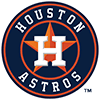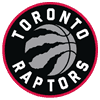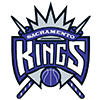The 2025 NBA Draft will be held in Brooklyn on June 25 at 8 p.m. ET, and the Mavericks will be on the clock first, followed by the Spurs, 76ers and Hornets. Those picks are all but confirmed as ESPN, Yahoo, NBA.com, Fox Sports and USA Today are all projecting the same start. However, after that, things get interesting. I've conducted in-depth analyses of a number of my favorite prospects, who I believe can have a significant fantasy impact as rookies and categorized them into five tiers.
The Consensus
Cooper Flagg, Duke
Flagg's elite defensive versatility separates him from the rest of the 2025 class. He has the height, strength and instincts to play down low as a shot blocker, but he also has the quickness and athleticism to lock down the perimeter. Plus, his motor never wanes on that end of the court. Offensively, Flagg, who put up elite numbers at Duke, is far from a polished prospect, but the potential is glaring. Flagg showed vast improvements early at the collegiate level and eventually emerged as Duke's go-to offensive player in clutch situations. There's nothing Flagg can't do on a basketball court, which is why he's the consensus No. 1 overall pick, but he'll have to continue to improve to live up to his lofty expectations.
Flagg's floor is higher than most projected No. 1 overall draft picks due to his defensive prowess and versatility, but if he's able to unlock his full offensive potential,
The 2025 NBA Draft will be held in Brooklyn on June 25 at 8 p.m. ET, and the Mavericks will be on the clock first, followed by the Spurs, 76ers and Hornets. Those picks are all but confirmed as ESPN, Yahoo, NBA.com, Fox Sports and USA Today are all projecting the same start. However, after that, things get interesting. I've conducted in-depth analyses of a number of my favorite prospects, who I believe can have a significant fantasy impact as rookies and categorized them into five tiers.
The Consensus
Cooper Flagg, Duke
Flagg's elite defensive versatility separates him from the rest of the 2025 class. He has the height, strength and instincts to play down low as a shot blocker, but he also has the quickness and athleticism to lock down the perimeter. Plus, his motor never wanes on that end of the court. Offensively, Flagg, who put up elite numbers at Duke, is far from a polished prospect, but the potential is glaring. Flagg showed vast improvements early at the collegiate level and eventually emerged as Duke's go-to offensive player in clutch situations. There's nothing Flagg can't do on a basketball court, which is why he's the consensus No. 1 overall pick, but he'll have to continue to improve to live up to his lofty expectations.
Flagg's floor is higher than most projected No. 1 overall draft picks due to his defensive prowess and versatility, but if he's able to unlock his full offensive potential, watch out. For his size, Flagg is an elite shooter, passer and ballhandler. However, compared to the elite shooters, passers and ballhandlers at the NBA level, Flagg still has plenty of room to grow.
Flagg's fantasy value as a rookie will be tied to his FG% in my opinion. He'll rack up enough defensive stats (REB/BLK/STL) to be valuable, but if he doesn't shoot at an efficient clip, his value will take a hit in category leagues. Flagg dominated the paint area on offense at Duke, but he may be forced to settle for more jumpers at the next level, especially if Dallas has to rely on the rookie for offensive production while Kyrie Irving (knee) rehabs.
Dylan Harper, Rutgers
Harper was Rutgers' highest-rated recruit in program history, but his lone collegiate season didn't go as planned due to a nasty illness that bothered him for an entire month.
Harper is a big-bodied, do-it-all playmaker with positional versatility. He puts a ton of pressure on the rim, is creative with his footwork and can finish smoothly with both hands. He won't be the quickest or most explosive at the NBA level, but he has plenty of athleticism to succeed. He can use his size to win 1-on-1, but he's more efficient when utilizing a screen and has the potential to be an offensive engine due to his feel for the game and willingness to find the open teammate. Harper's jumper in catch-and-shoot situations was elite, but he took too many contested off-the-dribble shots to be a consistent three-point shooter in college. Regardless, with more space and better shot selection in the NBA, Harper still profiles as an above-average three-point shooter.
A Spur has won Rookie of the Year in back-to-back seasons (Victor Wembanyama and Stephon Castle), so it'd be fun for that trend to continue. However, with De'Aaron Fox and Wemby expected to be healthy, San Antonio should be a contender next season. If that's the case, it'll be difficult for Harper to see enough minutes or usage to generate top-tier fantasy production.
Ace Bailey, Rutgers
Bailey is an elite shooter from anywhere on the court and used his size to get his shot off whenever he wanted in college. He's great as a spot-up shooter and will attack poor closeouts but settles for mid-range jumpers instead of getting all the way to the rim. He's better at attacking the rim in transition than in half-court settings. Bailey put up strong defensive production in college and has the length to be elite on that end of the court as a pro, but he needs to get stronger to make that happen. He's also a much better offensive rebounder than a defensive one, which will need to change as a pro.
Bailey's fit with Philadelphia depends on who's actually available for Philadelphia next season. Jared McCain and Quentin Grimes flashed in elevated roles for the injury-riddled 76ers last season, but Bailey could be a better fit in the starting lineup as a 3-point specialist if Tyrese Maxey (finger), Paul George (groin) and Joel Embiid (knee) are all healthy.
V.J. Edgecombe, Baylor
Edgecombe's two-way potential jumps off the screen. His elite athleticism, paired with a strong motor and high effort, makes him lethal on defense and in transition. He has the ability to hit circus shots around the rim, but he'll need to be patient and pick his moments better as a pro. Edgecombe profiles as an off-guard in half-court sets, but he certainly has the potential to be a ballhandling playmaker if he improves his decision-making. Edgecombe's ceiling will be as high as his 3-point shot takes him. He was solid at Baylor in that department but needs to make a significant leap to be considered an elite 3-and-D wing in the NBA.
Edgecombe's prowess on defense and in transition could make him a solid fantasy contributor in category leagues right away. He'll play tons of minutes as a defensive-minded guard in an offensive-minded backcourt. Edgecombe won't need to chuck in Charlotte, as LaMelo Ball and Brandon Miller will gladly handle those duties, so Edgecombe's FG% shouldn't be a killer, especially if Ball gives him a bunch of easy looks on a nightly basis.
Tier 2
Jeremiah Fears, Oklahoma
Fears excels as a slasher and in transition because of his ability to draw fouls. His mid-range game and off-the-dribble jumper are solid, but he needs to show more consistency, especially as a spot-up shooter. Fears needs to put on muscle at the NBA level, but he has good instincts on both ends of the floor and carries a multifaceted skill set.
Fears' style of play allows him to rack up stats quickly. However, he's not guaranteed a 30-plus minute role right away, and his FG% could be an issue if he isn't able to finish around the basket at the same rate he did in college.
Tre Johnson, Texas
Johnson is a pure three-level scorer. At 6-foot-6, Johnson has the size to get his shot up over smaller defenders whenever he wants, the quickness to blow by anyone sitting on his jumper and the athleticism to finish over help with authority. He loves to face-up, jab and pump fake like Carmelo Anthony when given a 1-on-1, but Johnson really excels off screens and in transition. He's naturally an off-guard and doesn't show point-guard tendencies. However, Johnson can certainly make plays and find open guys when the defense collapses on him.
Johnson is the classic "better in points than category leagues" kind of player, given his shot diet, but when he gets hot, he'll light up the scoreboard. His usage will likely depend on where he winds up, and it'll likely be difficult for him to be an efficient scorer as a rookie, making him a risky fantasy option.
Kon Knueppel, Duke
Knueppel was an all-around player at Duke, but his 3-point shot was his calling card. He profiles as a sharpshooter at the NBA level who can immediately contribute, while the 19-year-old's playmaking and defense will take some time to develop. Despite a 6-foot-7, 217-pound frame, Knueppel struggled to finish around the rim at an elite level in college, but he plays off two feet, has great patience in the post/paint and gets to his spot more often than not. He's not the quickest or strongest, but he has good defensive instincts and shows the ability to be a solid defender within a structured system.
Aside from Flagg and Harper, Knueppel might be the most pro-ready player in this draft. He should be able to shoot from distance at an efficient clip, especially if he lands on a team with a strong playmaker. Knueppel will be an intriguing 3-point specialist in fantasy as a rookie.
Rest of Lottery
Khaman Maluach, Duke
Maluach didn't showcase much of an offensive repertoire at Duke and was limited to hanging around the dunker's spot waiting for lobs, dunks or putbacks. He showed a willingness to let open jumpers fly, and while the mechanics looked fine, the results were not there. Defense is where Maluach really thrives. At 7-foot-2, Maluach has the size and length to be an elite defender in the NBA, but he'll have to work on his technique to stay out of foul trouble at the next level.
Maluach is a classic rookie big man who'll have flashes of fantasy relevancy with strong rebounding and defensive stats when there are injuries ahead of him in the frontcourt. However, he's a developmental project and likely won't see 25-plus minutes to start the season, regardless of where he lands.
Derik Queen, Maryland
Queen has a lethal face-up game, where he can blow by bigger defenders or bully small ones, and his work in transition is elite, which both culminate in a ton of free-throw attempts. The jumper isn't up to par yet, but Queen has a fluid motion and shoots with confidence. He's also not a technically sound defender, but he has the size, athleticism and versatility to excel on that end of the court eventually. Queen's upside could rival Flagg, Harper and Bailey, who are the consensus top-3 picks, but the Maryland product is a riskier selection. At 6-foot-10, Queen isn't a true center, which isn't a dealbreaker in today's NBA, but it does raise questions: which position will he play, and who will he be able to guard at the next level?
Queen's fantasy value is completely tied to where he lands. If he gets picked by Utah, Washington, Portland or Brooklyn, Queen could be a go-to option right away, but the rest of the lottery teams already have stars in place, which would significantly impact the big man's usage as a rookie.
Kasparas Jakucionis, Illinois
Jakucionis is an adept playmaker capable of scoring or passing from anywhere on the floor. At 6-foot-6 with good footwork, feel for the game and shooting touch, Jakucionis can play a multitude of roles, including that of a primary playmaker. On defense, he isn't a playmaker, but he's solid enough to work within a scheme.
Jakucionis projects as a combo guard in the NBA, though one who may be more comfortable as a passer than a scorer out of the gate. That gives him a high floor as a potential sixth man early on, if not a starter. Jakucionis has a very fantasy-friendly game, outside of his FG%, but his playing time will likely depend on where he lands.
Egor Demin, BYU
Demin is a 6-foot-9 point-forward with some of the best passing in the draft. He has the vision, size and creativity to make almost every type of pass with accuracy and seems to prefer setting up his teammates rather than scoring. While Demin isn't a great jumpshooter, he is crafty around the basket and in the mid-range area with fakes and a soft touch. Defensively, he's at his best anticipating the offense, jumping into passing lanes and using active hands to generate steals and blocks. Demin projects as a floor general at the NBA level - someone who can organize the offense and set up his teammates.
Like Jakucionis, Demin's skill set should make fantasy managers fall in love. However, he's a developmental project at this point and will likely have to earn a consistent role as a rookie, regardless of where he lands.
Sleepers
Maxime Raynaud, Stanford
Raynaud is incredibly skilled for his size, showcasing the ability to post-up, face-up, shoot and attack poor closeouts. He can finish with both hands and uses his footwork to navigate traffic in the paint. Raynaud loves to operate as an offensive hub, finding backdoor cutters or shooters in the corners when too many defensive eyes are on him, but his assist numbers weren't prolific in college. He isn't a natural playmaker but is willing to find the open guy, often with a dramatic flair. Raynaud's intensity on the court was also notable, but it'll be interesting to see if that continues when he doesn't have the ball as much as a pro. The big man was productive defensively at Stanford, but his ability to guard the perimeter will have to improve at the next level, especially since his offensive profile suggests he'll have to play more forward than center in the NBA.
Raynaud's ability to block shots and knock down 3-pointers should be valuable for fantasy managers in category leagues if he ever sees 25-plus minutes consistently as a rookie.
Danny Wolf, Michigan
Wolf has interesting versatility with his 7-foot frame, able to dribble and pass in the halfcourt and transition. He also makes up in footwork and physicality what he lacks in athleticism. His jumpshot can come and go, but his touch is good enough to be a strong baseline for further development. Wolf has shown enough in most aspects of the game to play both on and off the ball. Wolf may be able to take on some secondary playmaking responsibility at the NBA level and potentially act as a sixth man in the frontcourt, especially if he becomes a strong stand-still 3-point shooter.
Essentially a 7-foot point guard, Wolf's offensive game is a fantasy manager's dream, especially considering he'll be listed as a frontcourt player on fantasy apps.
Honorable Mention
Bogoljub Markovic, Mega Basket
Even at 6-foot-11, Markovic's preferred position is on the wing. He has a great feel for the game and is extremely fluid for his size. Markovic's jumper will play at the next level, plus he happily and effectively attacks poor closeouts when defenses start to take away his three-point shot. He's also willing to find the open guy when double- or triple-teamed. Markovic has the length and instincts to be a rim-protector at the NBA level but needs to work on his perimeter defense. Most of Markovic's defensive highlights come as a secondary defender, so there's hope he could be a plus-defender in the right scheme. At only 19 years old, Markovic still has time to fill out his frame, but there wasn't a player in the NBA who was at least 6-foot-8 and weighed less than 200 pounds during the 2024-25 campaign.
If you haven't caught onto the trend yet, it's simple: big men with versatile skill sets! The odds of Markovic being part of an NBA rotation in October are almost zero, but I fell in love watching this kid hoop overseas and think he would be fantasy relevant if he ever gets a 25-plus minute role.





























